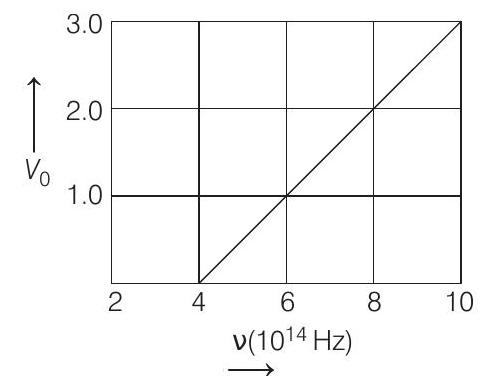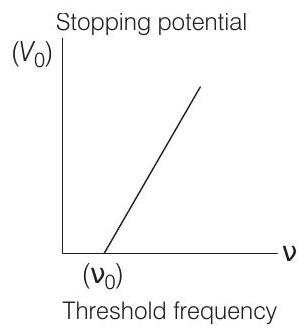Modern Physics 2 Question 16
1. The stopping potential
(Take, Planck’s constant
(Main 2019, 12 April I)

(a)
(b)
(c)
(d)
Show Answer
Answer:
Correct Answer: 1. (b)
Solution:
- Given,
Planck’s constant,
and there is a graph between stopping potential and frequency.
We need to determine work function
Using Einstein’s relation of photoelectric effect,
or
From graph at

Alternate Solution
From graph, threshold frequency,






